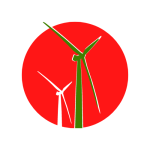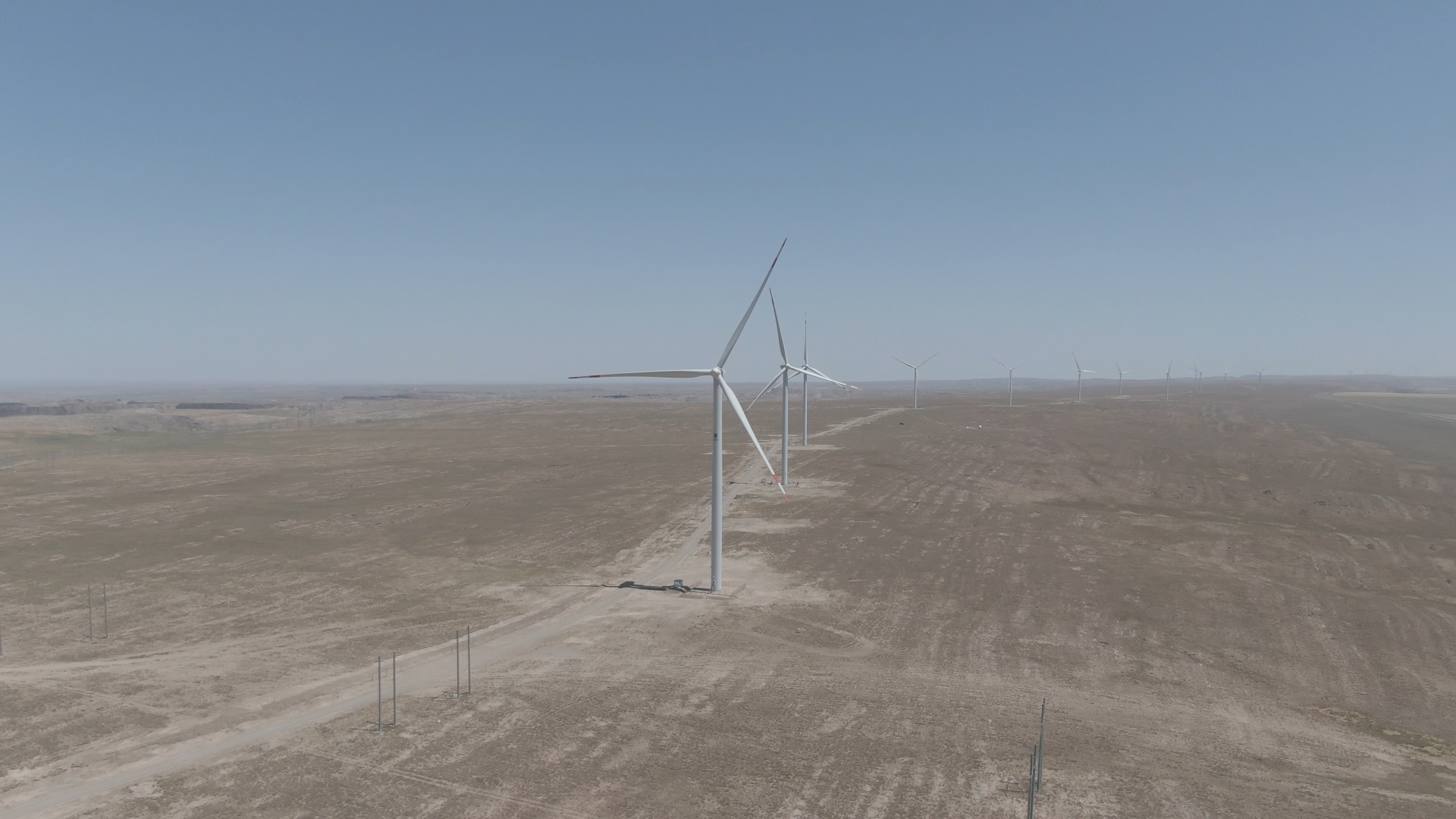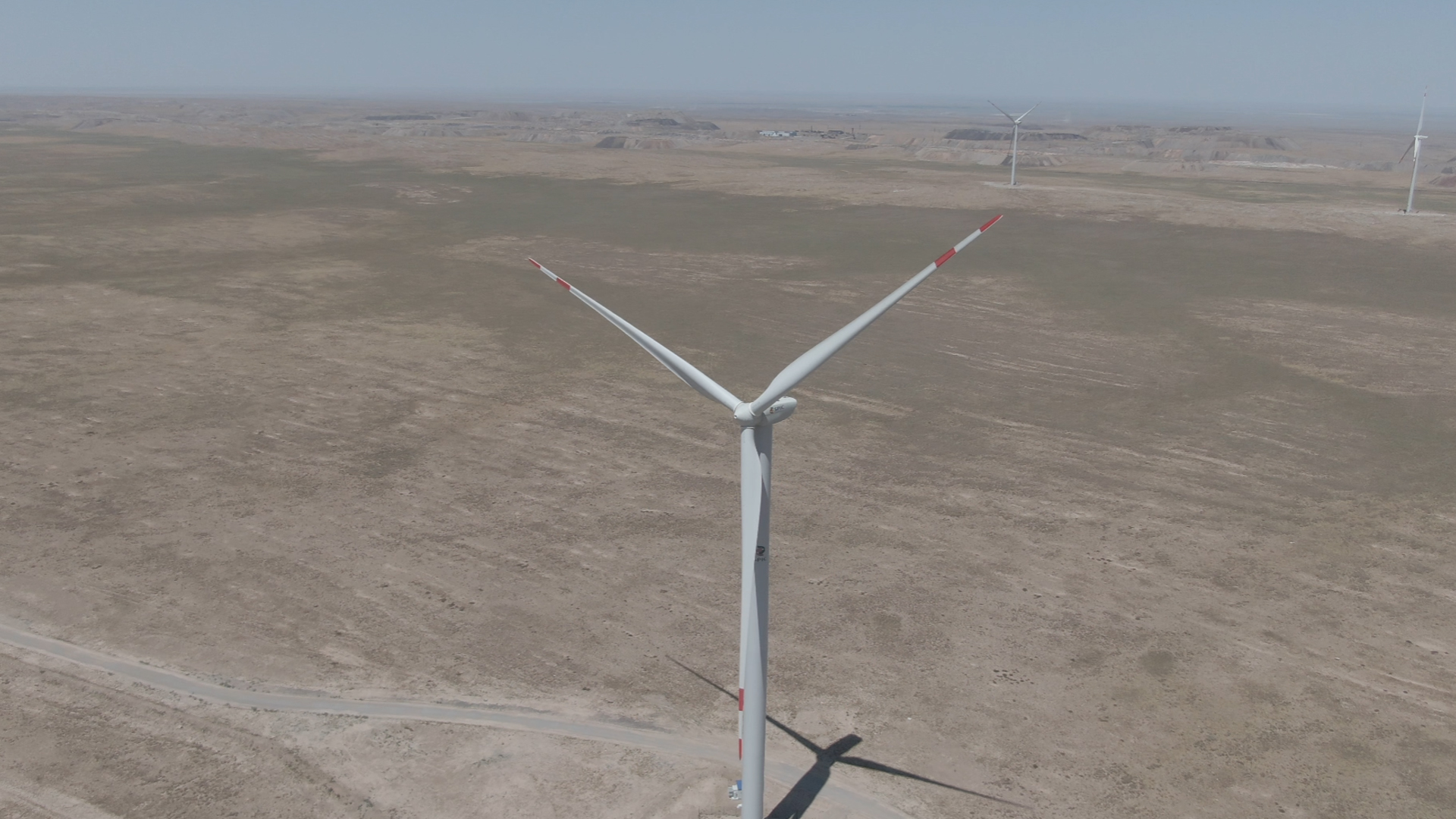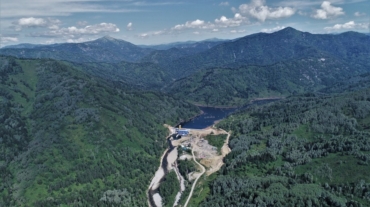
Zhanatas Wind Power Plant LLP
Status: operating (as of September 2022)

General information
Name: Zhanatas Wind Power Plant LLP(*)
Chinese name: 札纳塔斯风电 有限责任公司
Location: Zhambyl oblast, Sarysu district, Zhanatas city, mkr.1, building 18/4, office 10, office 11 (43°30’48.1″N 69°38’49.6″E)
Project type: electric power industry
Owner: China Power International Holding, Visor Investments Cooperatief(*)
Main Contractor(s): Sinohydro Corporation Limited(*)
Financing sources: European Bank for Reconstruction and Development (EBRD, $24.8 million), Asian Infrastructure Investment Bank (AIIB, $34.3 million), Industrial and Commercial Bank of China (ICBC, $13.3 million), Green Climate Fund ($22.9 million)(*).
Project Cost: $150 mln(*)
Project Status: operating (as of September 2022)



Project Overview
Annual generation of 350 mln kWh by the Zhanatas WPP will be able to meet the electricity needs of 1 mln local households
The Zhanatas WPP is the largest wind power plant in Central Asia, which is located near the town of Zhanatas, the center of phosphate rock mining for fertilizer production. The area is characterized by a unique wind potential, with wind speeds averaging 7-8 m/s. The plant has a capacity of 100 MW, with 40 wind turbines of 2.5 MW each(*).
Construction started in July 2019 and was completed in June 2021(*).
The annual generation of 350 million kWh of Zhanatas Wind Power Plant will be able to meet the electricity needs of 1 million local households, which will improve the power shortage situation in South Kazakhstan. Compared to a coal-fired power plant of the same capacity, the WPP will save up to 109500 tons of coal and reduce harmful emissions of sulphur dioxide by 1031 tons, nitrogen oxide by 934 tons, carbon dioxide by 289,000 tons, dust by 322 tons, as well as reduce ash and slag emissions by 32900 tons per year(*).
The Zhanatas WPP is not only a modernization of Kazakhstan’s power industry, but also a contribution to the development of renewable energy sources in the country, which reduces the negative impact on nature and people.

Project impact

Plant and wildlife

Visual impact

Socio-economic environment
Virtually the entire WPP area will be available for grazing.
During operation, the impact of the Zhanatas WPP on flora and fauna is expected to be minimal. Bird collisions with the blades may occur but are not expected to be a significant problem. Migrating birds cross the area at an altitude significantly higher than the rotation radius of the blades. Migration routes run 54 km north of the turbines, parallel to their location (*).
The 150m high wind turbines may affect the perception of the landscape from certain vantage points, but the visual impact would be negligible(*). Virtually all of the WPP land will be available for grazing. No use of the WPP land in any other way than grazing is envisaged. Impacts on land use during operation are considered to be insignificant (*).
233.5 ha of land was allocated for WPP by the Akimat of Sarysu rayon from the state reserve lands and land leased to 7 peasant farms. Land withdrawals for WPP were considered small and compensation was not provided solely due to the effort required to re-register documents (*). None of the land users received compensation for land acquired for the project in the form of alternative land or cash(*). This is in violation of the socio-environmental policies of the international financial institutions that provided funds for the project (*).
*Photographs taken by the “Just Journalism”


